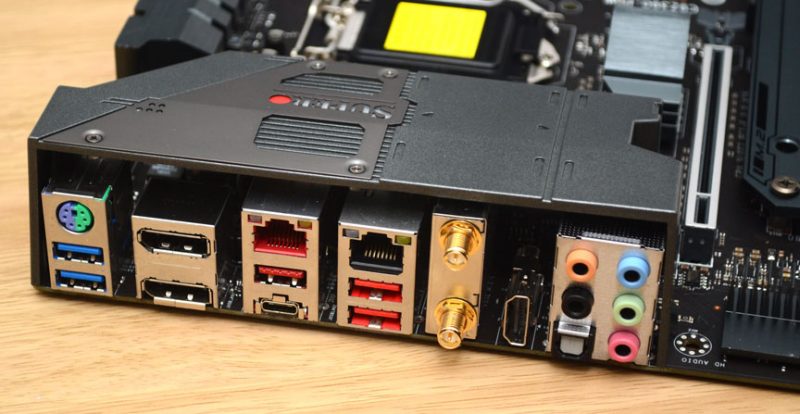SuperMicro C9Z390-PGW Z390 Motherboard Review
Peter Donnell / 6 years ago
A Closer Look
The design of the motherboard is pretty cool, and while it does have a lot of professional features, it has an aesthetic that would be appealing to many gaming builds. It has an almost industrial steampunk look about it.
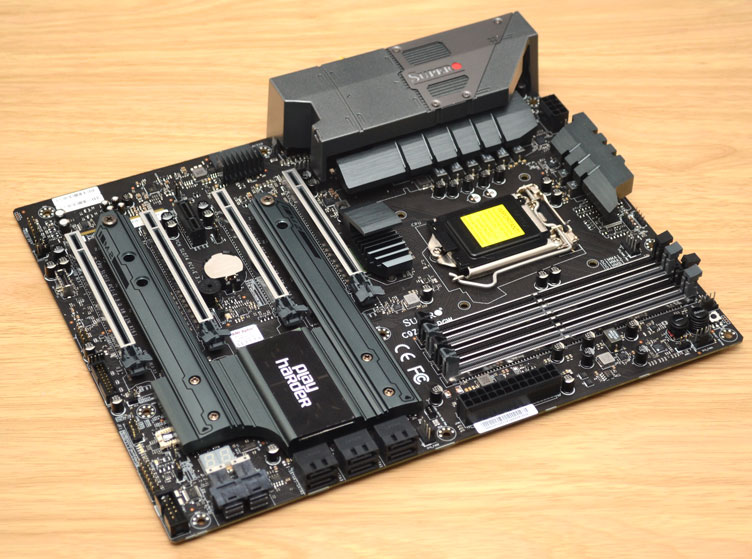
The heatsinks are a good size, although there is only one 8-pin CPU power connector. Most of the high-end overclocking models use an 8+4 or 8+8 configuration. However, it’ll still support CPUs up to 140W TDP, so overclocking our i9-9900K shouldn’t be an issue. There are 10 high-quality capacitors flanking the socket, with eight MOSFETs behind those. While not pulling the most power in, the filtering does look pretty robust and should result in stable voltages while overclocking.
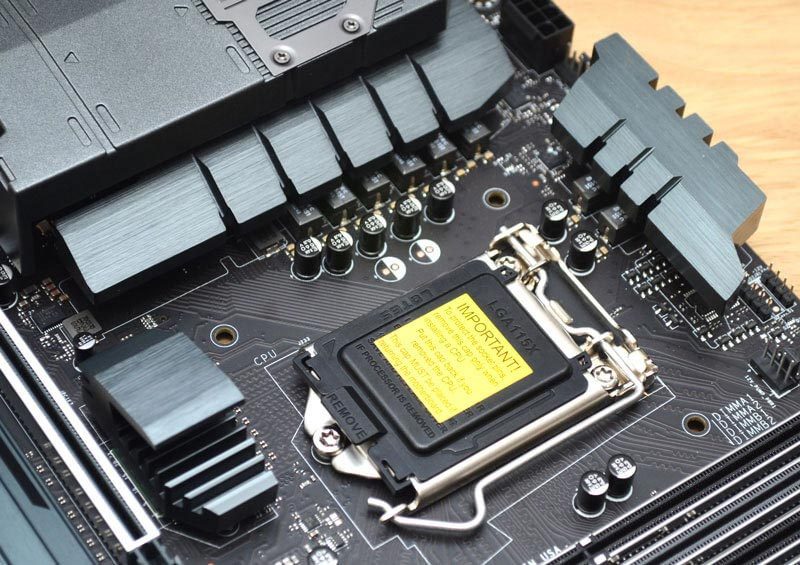
Rear I/O Guard
While purely aesthetic, the large guard on the rear I/O does help keep the aesthetics neat and tidy. I love the little details they’ve cut into it also, as they keep it from looking too boring.
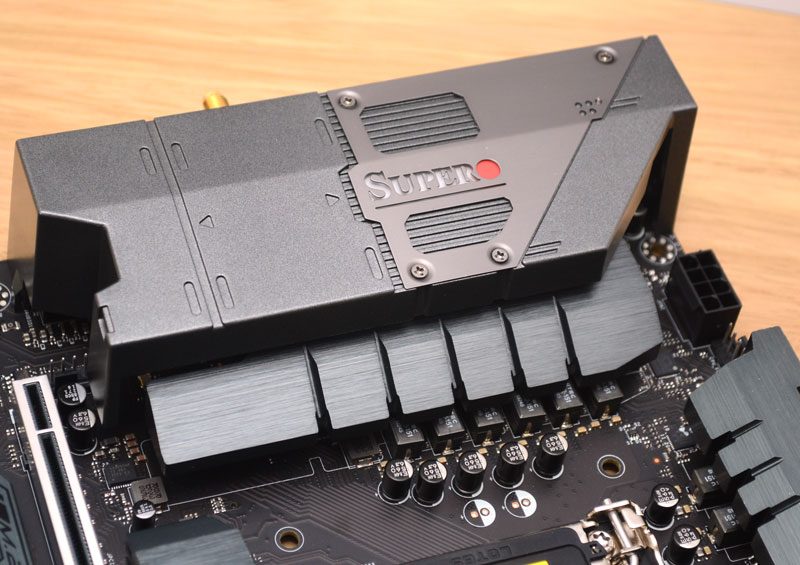
Along the top row, you’ll find a few fan headers, as well as some 12V RGB headers should you need them.
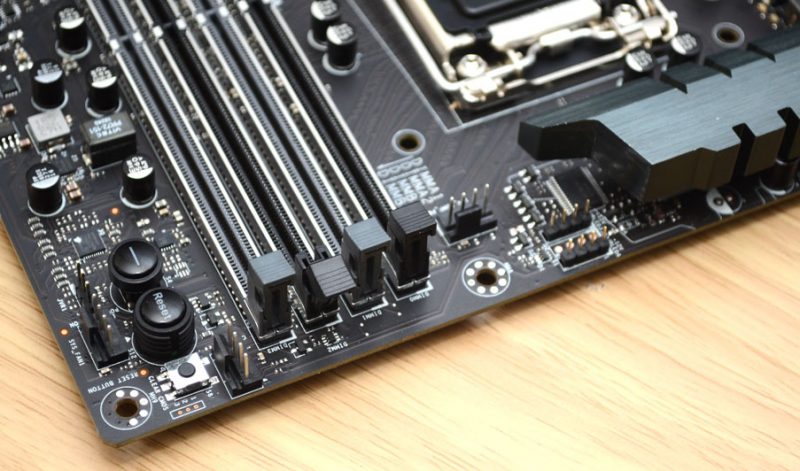
There are four DIMM slots, with support for DDR4 4000 MHz+ OC. There are a few nice overclocking/testbench friendly features here also, such as the onboard power and reset buttons, and a small CMOS reset button.
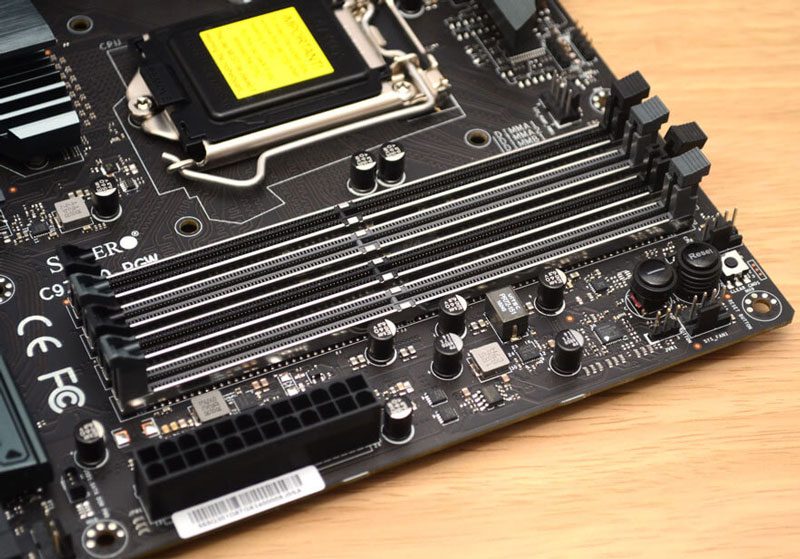
Storage
Towards the bottom right, you’ll find six SATA 6Gbps ports, as well as two U.2 ports for additional storage requirements.
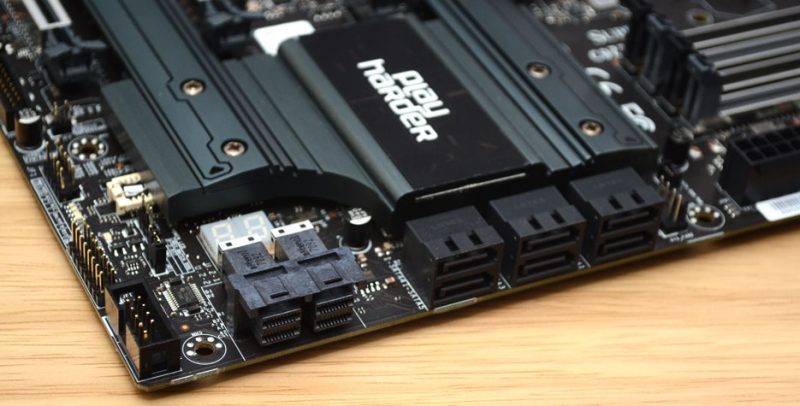
Just behind the U.2, there’s a small Debug LED readout, which is always handy for fault finding, and next to that, the screw mounts for the large M.2 heatsinks.

All of the PCIe lanes are fully wired, and I’m assuming the board has a PLX chip despite not being listed on their website. The motherboard can run the lanes in 16/NA/16/NA or 8/8/8/8 configurations, which is sure to appeal to those building workstation systems.
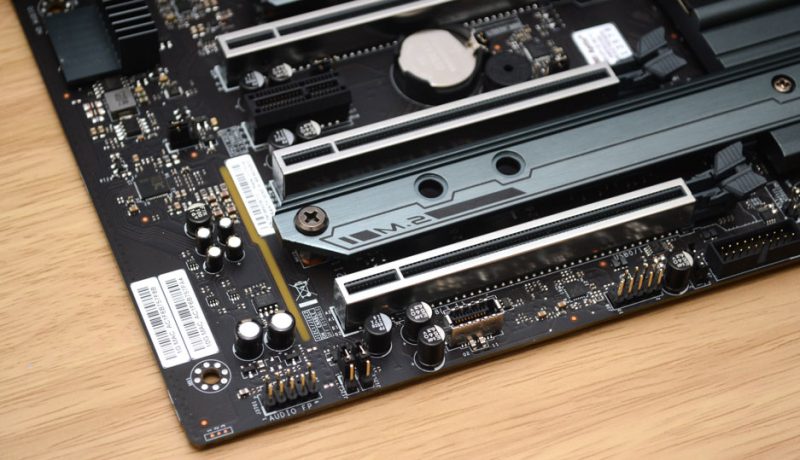
There are two huge heatsinks for the M.2 drive mounts, which not only look great but also protect and cool the drives. They will support 2260/2280/22110, and 2260/2280, 2230 SSDs and Optane drives.
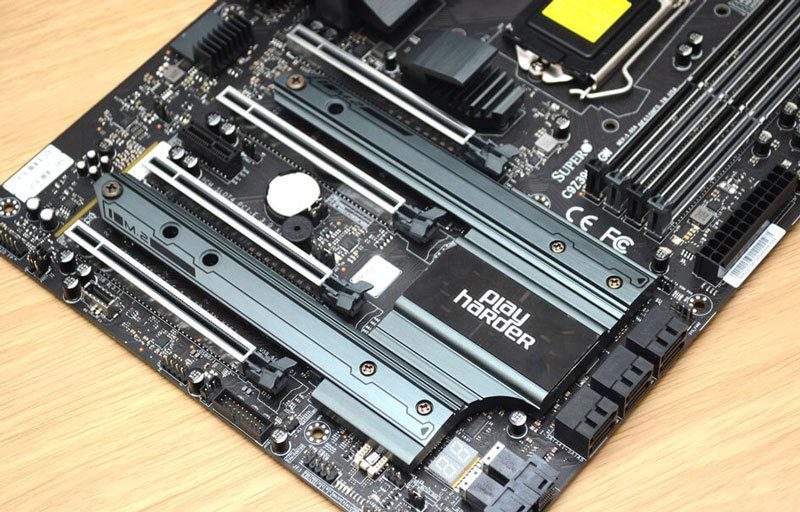
Finally, the rear I/O, which features six USB ports, including four Gen 2 (3 x Type A, 1 x Type-C). Interestingly, there are not one, but two DisplayPort outputs, and an HDMI port further down next to the audio jacks. Of course, networking is well taken care of, with an Intel PHY i219V port and the Aquantia AQC107 10G port, as well as the built-in WiFi.
